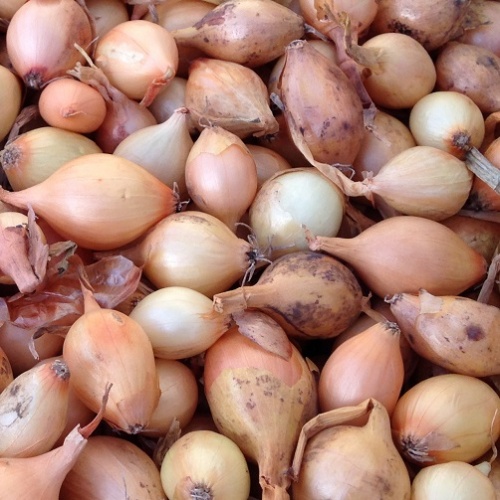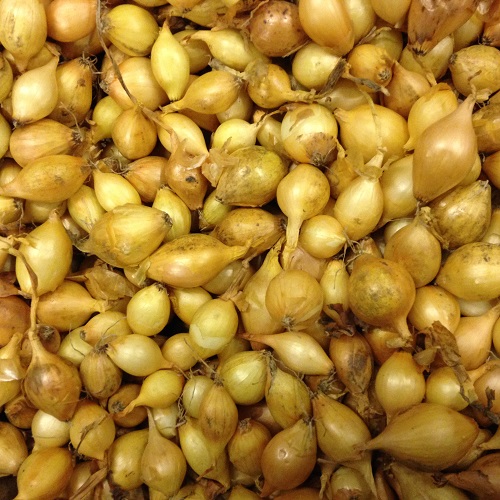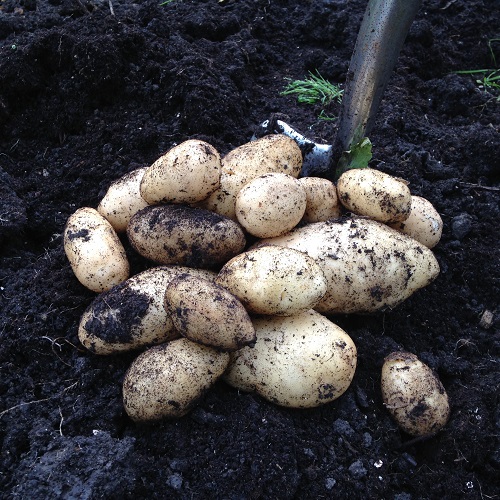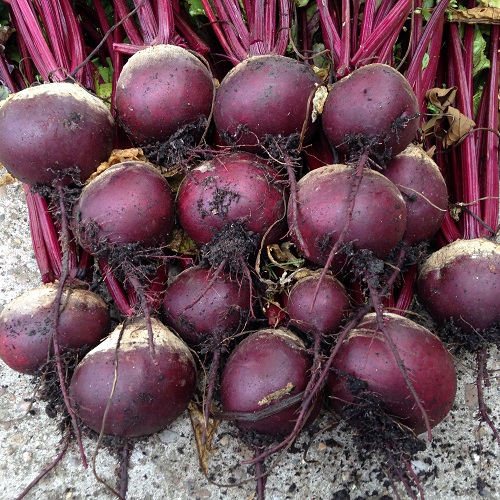Pack of 400g Onion Sets - Red Baron
Red Baron Onion Sets are available to order from mid-December through to March.
Red Baron is an spring planted onion type. It has red tinged skin and has superb flavour with good keeping qualities. The flesh is very crisp and sweet, and is ideal for use in casseroles, salads and fried.
| Onion Sets Red Baron Grow Notes |
| When to Plant Sets: | Spring |
| Germination Temperature: | 12 ℃ | Cover Sets: | Yes - Tips showing |
| Time to Shoot: | Depends | Frost Hardy: | Yes, Can be protected over Winter. |
| Spacing Between Plants: | 15cm | Row Spacing: | 30cm |
| Plant Height: | 50cm | Planting Position: | Sun |
| Month | Jan | Feb | Mar | Apr | May | Jun | Jul | Aug | Sep | Oct | Nov | Dec |
| Sow In Trays: | | | | | | | | | | | | |
| Sow Direct: | | | | | | | | | | | | |
| Harvest: | | | | | | | | | | | | |
How to Successfully Grow Onions from Spring Planted Sets
Growing onions from spring planted onion sets gives the grower a head start over onions grown from seed, without all the potential problems associated with handling and caring for delicate seedlings.
Growing in containers
Onions are quite easy to grow and can be grown in beds on the allotment, in the vegetable patch of your kitchen garden or in containers. However, they do need to be grown in a neutral, well-drained soil and preferably in a sunny position. Fill containers with good quality compost or with garden soil, which contains plenty of organic matter. Containers need to be at least 20cm deep and can be of any size, bearing in mind that onions will need to be spaced at 10cm apart. Firm the soil surface and apply water with a watering can and rose attachment. Use a dibber or gently push the sets into the soil, so that only the tips are visible. Place the container in a sunny position.
Growing in beds
Prepare planting beds in the autumn or on a suitably dry winter’s day, incorporating plenty of organic matter. Onions grow best in well-drained soil, which is situated in a warm, sunny position. Rake the surface soil to a fine tilth and firm with the back of a rake or by treading, if the soil is loose. Mark out your rows with a string line and draw a furrow with the edge of a hoe or simply push the sets into the soil so only the tips are showing. Space each onion set at 10cm apart in the rows and allow 30cm between the rows. Apply water with a watering can and rose attachment.
General aftercare
Onions are heavy feeders and will need plenty of water and nutrients during the growing season. If the soil has been well prepared with plenty of organic matter added then this might be sufficient, otherwise applying an organic fertiliser such as Blood Meal will prove beneficial. Take care not to add too much high nitrogen based fertiliser to the soil but if the soil quality is poor it may benefit from the addition of a general fertiliser such as Growmore. Water plants well during dry spells.
Pests and diseases
Look out for signs of yellowing leaves, rust, mildew and mould, which can indicate possible fungal disease, often brought about during prolonged periods of humid weather. Generally, most onion sets purchased from reputable suppliers will produce quality onions, which are not usually affected by any typical disease problems. There are no recommended fungicide treatments for onions. Onion fly is a known pest but rarely affects plants grown from sets.
Harvesting and storage
Onions from spring planted sets will be ready for harvesting from late summer into early autumn. Lift the plants and leave them to dry before storing them in a cool dry place.




